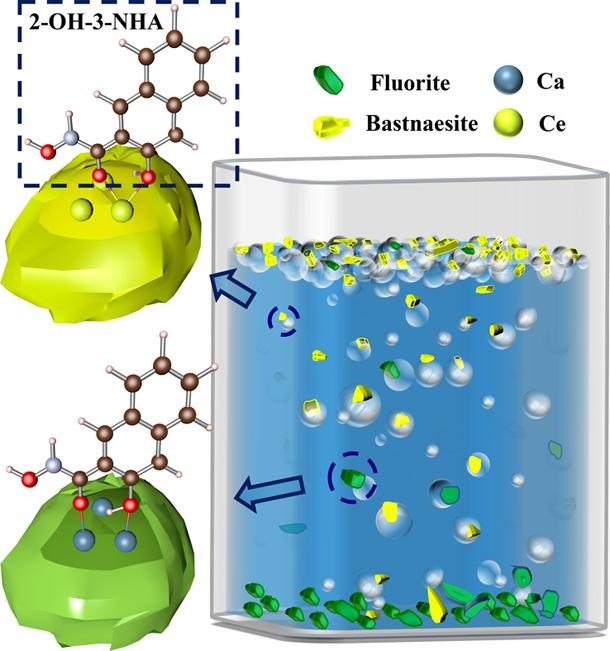Impact Factor:7.312
DOI number:10.1016/j.seppur.2021.120307
Journal:Separation and Purification Technology
Place of Publication:England
Key Words:Bastnaesite; Fluorite; Flotation; Collector; Naphthyl hydroxamic acid
Abstract:Bastnaesite ((Ce, La, Pr, Rb)CO3F) is an important source of light rare earth elements and is commonly associated with calcium (Ca)-containing minerals such as fluorite (CaF2), calcite (CaCO3) and dolomite ((Ca, Mg)(CO3)2). Froth flotation is an efficient method to separate bastnaesite and Ca-containing minerals. 2-hydroxy-3-naphthyl hydroxamic acid (2-OH-3-NHA) and 1-hydroxy-2-naphthyl hydroxamic acid (1-OH-2-NHA) are two widely used flotation collectors for bastnaesite and this manuscript investigates their performance and interaction mechanism in the flotation separation of bastnaesite/fluorite. The development of novel collectors must be based on the investigations of this manuscript. The flotation experimental results show the excellent selectivities of NHAs and the better selectivity of 1-OH-2-NHA than 2-OH-3-NHA. Zeta potential measurements suggest stronger adsorptions of NHAs on the bastnaesite surface than fluorite, which results in the excellent selectivities of NHAs. First-principles calculations demonstrate that naphthalene ring-bonded OH group of NHAs shows non-selective adsorption towards the surfaces of bastnaesite and fluorite. The better selectivity of 1-OH-2-NHA than 2-OH-3-NHA is explained by the lower reactivity of naphthalene ring-bonded OH group due to the stronger steric hindrance effect of naphthyl group towards this OH group.
Indexed by:Journal paper
Correspondence Author:Mengjie Tian
Discipline:Engineering
First-Level Discipline:Mining Industrial Engineering
Volume:285
Page Number:120307
Translation or Not:no
Included Journals:SCI
Links to published journals:https://www.sciencedirect.com/science/article/pii/S1383586621020116


